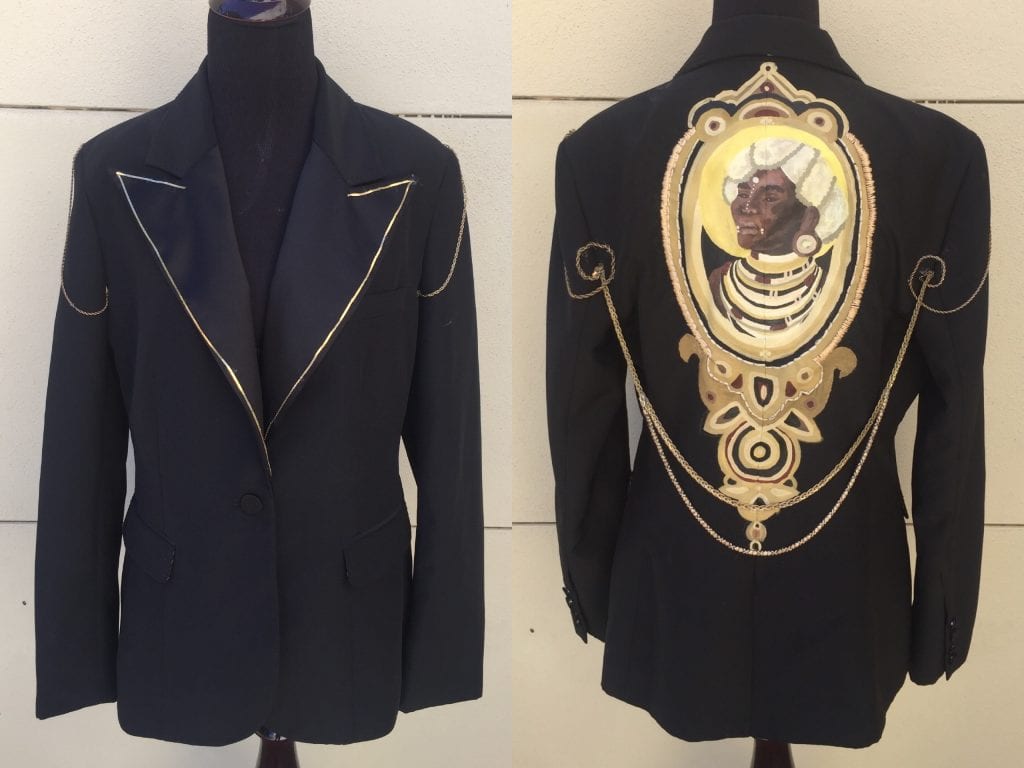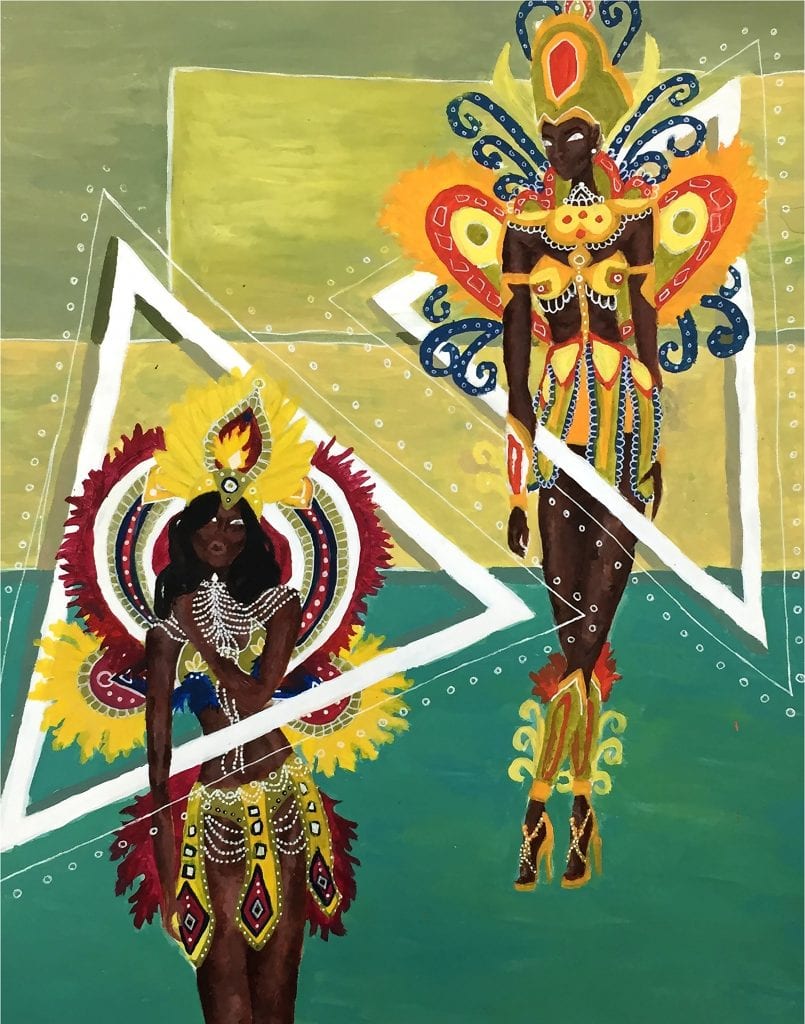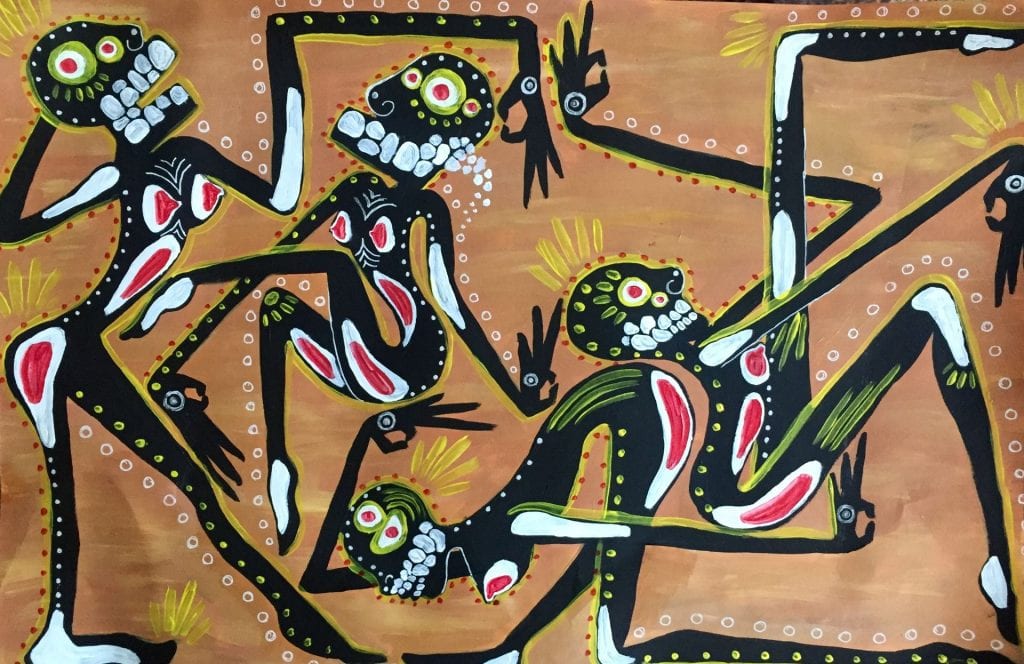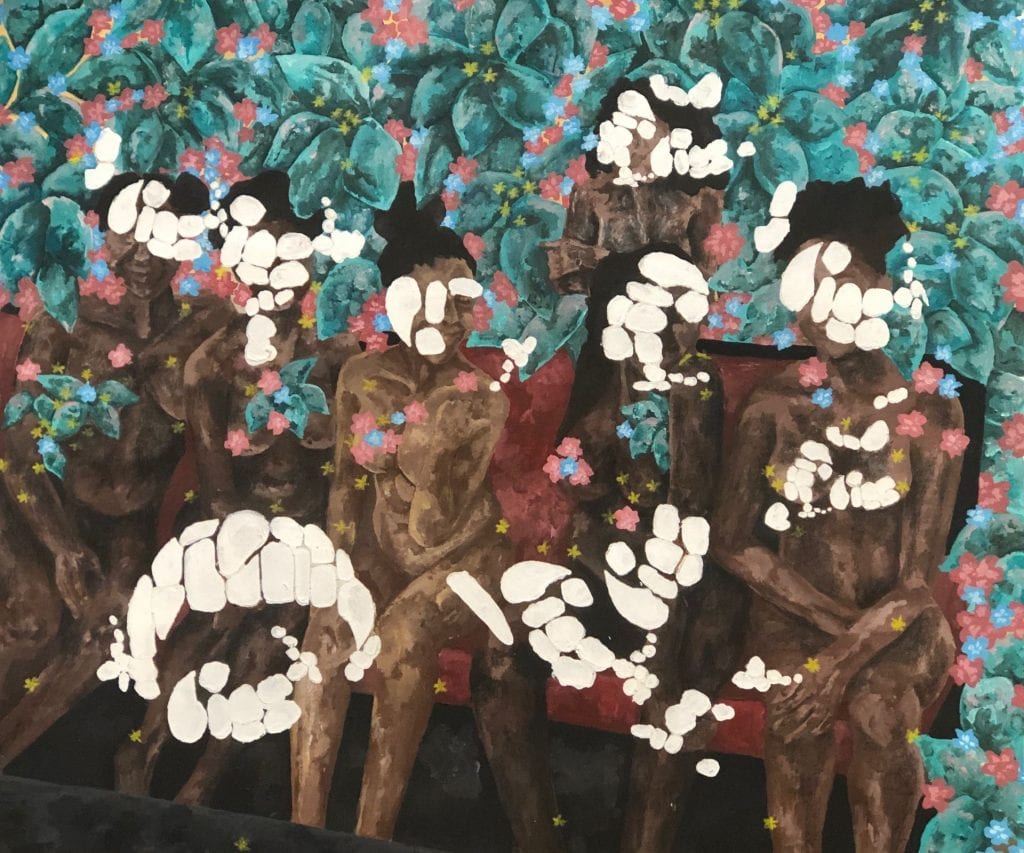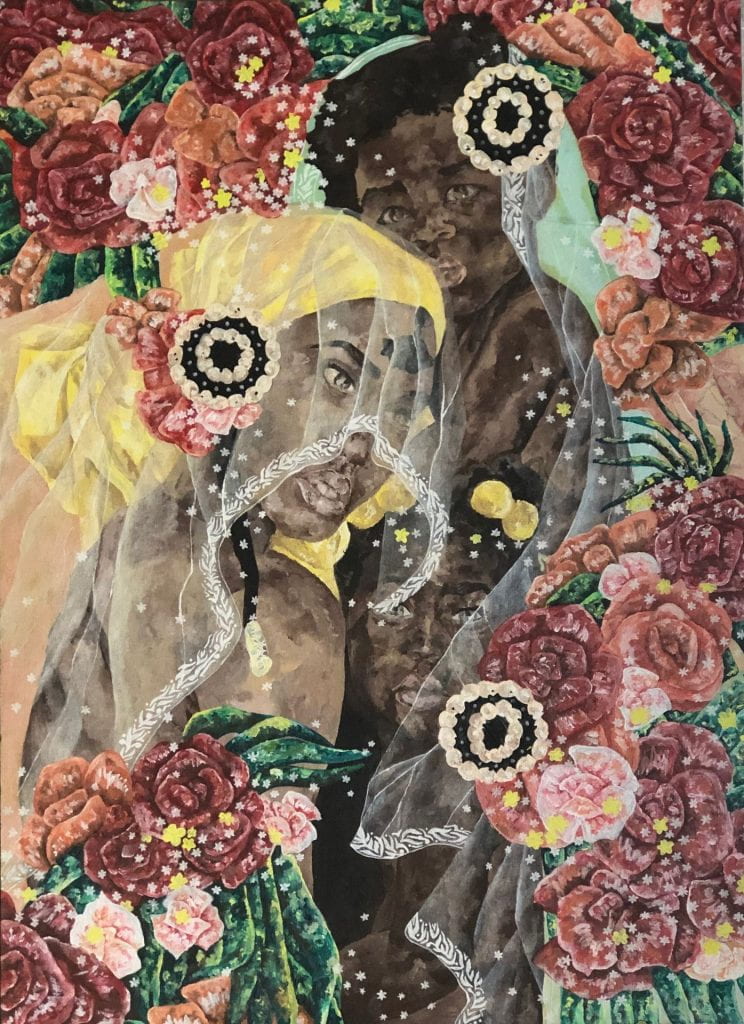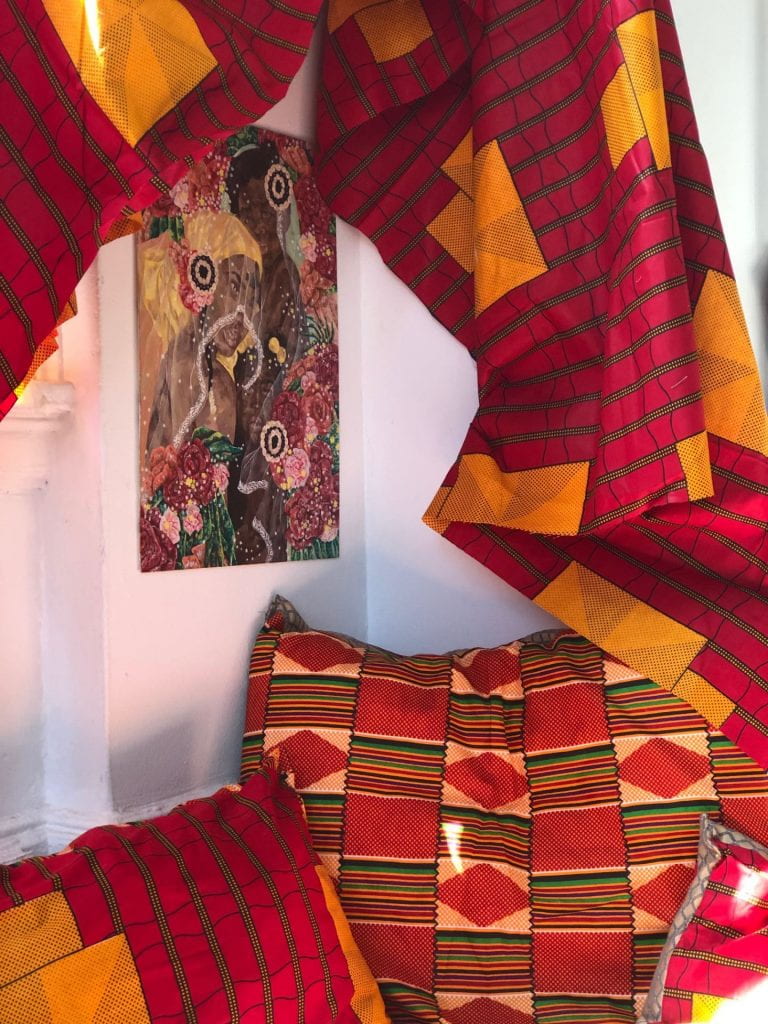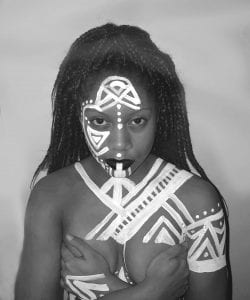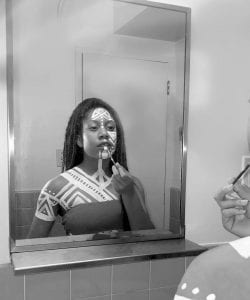Ahmrii Johnson
Reflection Assignment
Entering the stage of The New School and New York City was one of the most ambitious actions of lifetime. This monumental decision enabled and supported the emotional, mental, and spiritual transition of maturity in my life. I entered the school with the assurance of studying Fashion Design, however since my time and exploration of the school and the realities of what it has to offer interdisciplinarily, I have wavered from such a linear plan.
Across all the work I have created in the past there is a motif of cultural context meant to express conversation of cultural tolerance with various socio-political atmospheres.
In addition, my style is consistently very detail oriented among all mediums of work. I focus on color pairings, patterns, and the collaging of various shapes and lines. Integrative Studio has encouraged the ambition of expanding work into the realm of three dimensionality in existing spaces. As progress in my academic career, I would like to utilize research and analytical thinking to conceptually support my artmaking. Specific works of art or design hold more power when there is a strong foundation in meaning and purpose. Therefore, open ended projects that were meant to curate individual passion and interest from students were the projects that resulted in my best works. I enjoyed the freedom of expression and conceptualism in the approach of a certain assignment in any of my classes. Further research could always be done about topics, especially those pertaining to the organization, functions, and history of societies – a major interest of mine.
Highlights
One of my favorite academic projects of the year was not one I developed for class, but for the creation of The New School’s first magazine made by and for black students The Alchemy.
Ahmrii Johnson for The Alchemy
What It’s Like To Be A Black Student At The New School
Committing yourself to conquer the challenges and intensity of a college curriculum is already in itself a daunting task; and now we, as New School students, assume the additional pressure as industrious artists and inquisitive thinkers. What keeps most of us equipped to endure the exhaustion of long class schedules, the undertaking of a full night spent laboring on various projects, and the tension of juggling auxiliary responsibilities is the sense of community that comes with the acknowledgment that we are all here for the same essential purpose of absolute development. Finding a body of individuals that you can naturally relate to, and vice versa, is quite crucial for the success of a student’s well-being on campus, and therefore, their overall prosperity. The students that may have a more difficult time with this than others are the students of color, particularly the black students of The New School. Less than 9% of the student population is Black, and the percentage decreases even more within each school under the university. This isn’t merely a number ratio—this is an extremity that represents the contrasting challenges of discovering cultural, spiritual, or psychological support for Black students in their peer group and faculty in comparison to their counterparts. But, what does this report really look like in the everyday life of Black students at The New School?
In the past few weeks of assimilating to the atmosphere of New School classes and observing the flow of the student body along with the faculty, I have noticed just how prominent my race is in class discussions, social interactions, and customary impressions. I am continually reminded that I am not just a student at this school: I am an ethnic, a brown, an ambiguous, an “exotic”; a black student, at The New School. And with that particular recognition, from those I interact with comes various recurring situations. Imagine that in just about every course you take, when the curriculum happens to incorporate the work or experience of Black artists, each of your non-black professors expect you to be the sole representative of an enormously diverse racial community. Imagine recounting constant experiences to non-Black students that pretend to understand history that could never encounter themselves. Imagine constantly having to bite your tongue when a non-black/brown girl approaches you, gives you a dramatically positive compliment about your braids, cornrows, or weave and then follows up with a statement on how she really wants to try that “aesthetic” for herself. Imagine that you spend time with a group of seemingly perspicacious group of people who present a level of empathy despite not experiencing the same circumstances as you, only to realize that in some way they consciously or unconsciously benefit in social acclaim from interacting with you/adopting your interests. Imagine realizing that these people look for your approval of certain ideas, interests, perspectives, etc. for the same favor. Imagine that your non-black professor insists that the entire class of non-black/brown students use their research on spiritual ceremonies, intricately tied to one’s cultural practice, to be appropriated and downgraded to a performance as an assignment. Imagine that you’re surrounded by people who vigorously promote and superficially flaunt a cultural practice that stemmed from the hardships your ancestors had to (and you presently) endure, like streetwear and hip-hop culture… For my fellow black students, we do not have to imagine these very few examples of uncomfortable circumstances because we live them and many more on a daily basis.
Although The New School was founded on the premise of social justice, cultural tolerance, and progressive activism, its reality is that this institution, though more tolerant than others, remains largely dismissive of the devalued environment it has left for its black and brown students. Why are courses with a heavy concentration in the history and expressive experiences of the black community taught by non-black professors? Why are there so few black professors teaching at The New School in general? Why are the students of color who profoundly rely on the environment of the school’s Student of Color Space being denied access to it? I only call for the acknowledgement of even a few of these disparaging neglections of a community of students that, although small in population, contribute substantially to the artistry of The New School.
Another highlight for this year was the creation of a photographic and videographic series where I was able to partake in intimate cultural activities that ostentatiously celebrate the heritage that I almost feel detached from living in the city.
Video:
https://drive.google.com/open?id=1p89VQiw_bVdPLJOZfBskdtLw2AGfUvZq
As I pursue future projects I would like to attempt to solve the question of how I could incorporate the various skills I have learned into an individual career path. One project can generate another in the interdisciplinary sense as it did for my series – when the photographs inspired the content of the video. I can uses this process of development to intertwine the various forms of artmaking I have and will experiment with.
